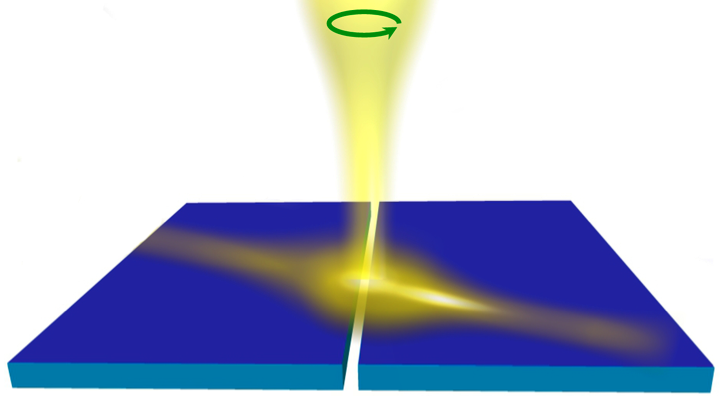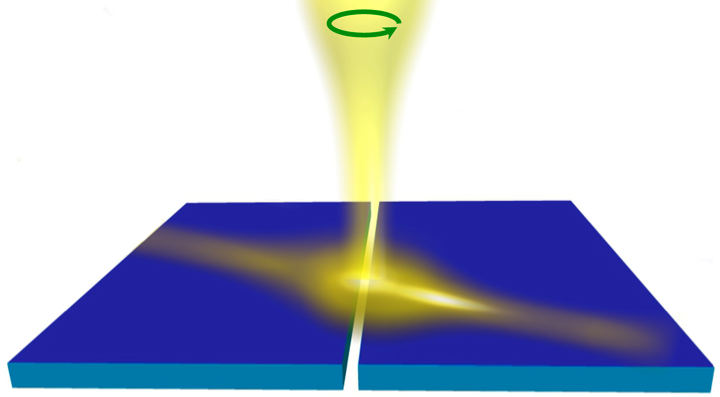Weak Measurement of Polarization by a Slit
Converting light into surface waves gives physicists compact and powerful tools for manipulating it. Now, in Physical Review Letters, researchers show that this conversion can reveal the internal state of the original light beam through an exotic effect.
Students learn that measuring the quantum mechanical state of a system forces it into a pure state that matches the measurement result. But in 1988, three theorists proposed that a so-called weak measurement could reveal aspects of an impure quantum state without changing it. Although this interpretation remains controversial, experimenters have, in recent years, used weak measurement to amplify tiny quantum phenomena such as the “spin Hall effect of light,” in which polarized light shifts by nanometers as it refracts at an interface.
Yuri Gorodetski, of the University of Strasbourg and CNRS in France, and co-workers found a related effect when light is transformed into a wave called a surface plasmon polariton (SPP) that propagates along a metal surface. Instead of happening at an interface, this conversion happens when a light beam is focused on a tiny slit in the metal. Light that is linearly polarized with its electric field along the slit produces an SPP beam with zero intensity in the center. When the researchers intentionally made the polarization imperfect, it led to a dramatic energy redistribution between the left and right sides of the beam. As a result, the SPP field experienced either a large angular deflection or displacement, depending on whether the polarization was slightly elliptical or slightly tilted, just as predicted by weak measurement theory. – Don Monroe





